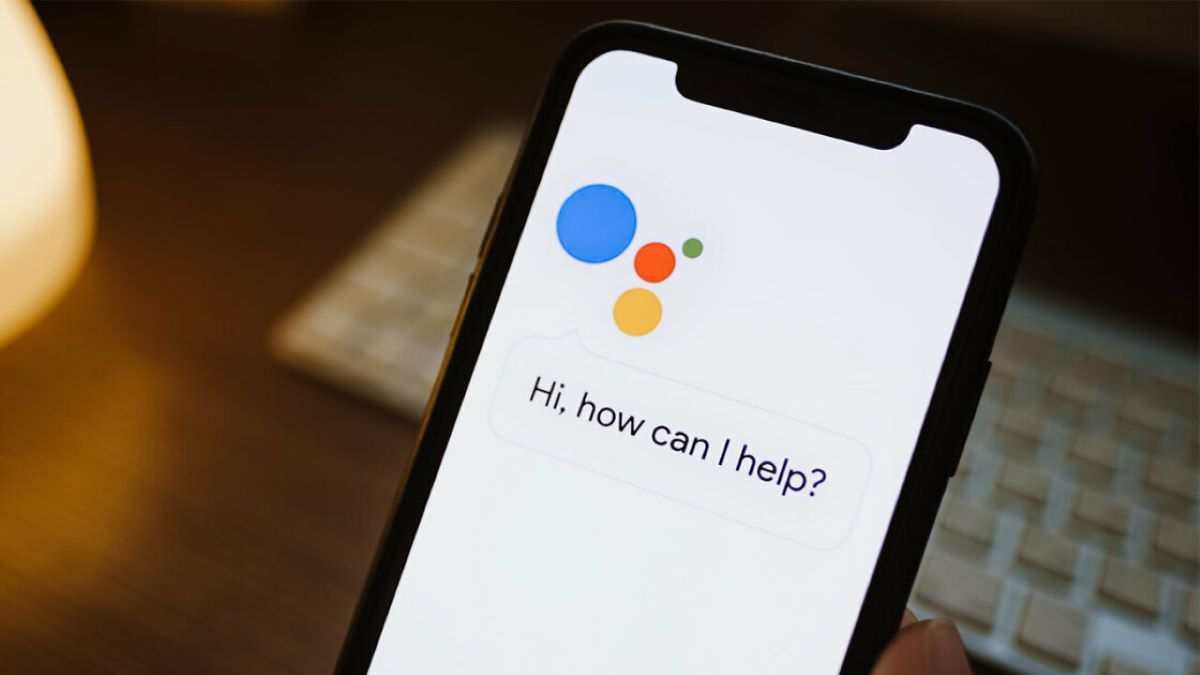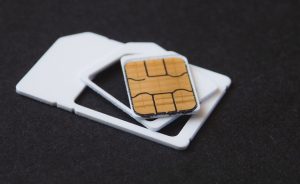Check your internet connection
One of the first things you should do when Google Assistant won’t send a text is to check your internet connection. Google Assistant relies on a stable and active internet connection to perform its tasks effectively. Here are some steps you can take to troubleshoot your internet connection:
1. Check Wi-Fi or cellular data: Ensure that you are connected to a stable Wi-Fi network or that your cellular data is turned on and working properly. If you are on Wi-Fi, try turning it off and on again, or switch to a different network to see if that resolves the issue.
2. Test your connection speed: Use an online speed test tool to determine the speed of your internet connection. If the speed is significantly lower than usual, it might be affecting the performance of Google Assistant. You can try resetting your modem/router or contacting your internet service provider for further assistance.
3. Restart your device: Sometimes, a simple restart can resolve connectivity issues. Turn off your device, wait for a few seconds, and then turn it back on. This can help refresh the network connections and potentially resolve any temporary issues.
4. Check for network restrictions: Some networks, such as work or school networks, might have restrictions in place that limit the functionality of certain apps or services. If you are experiencing issues with Google Assistant while connected to a specific network, try connecting to a different network to see if the problem persists.
By following these steps, you can determine if the problem lies with your internet connection. If Google Assistant still won’t send texts after verifying your connection, proceed to the next troubleshooting step.
Ensure your device is updated
Another common reason why Google Assistant may not be able to send texts is if your device is not updated with the latest software. Regular updates not only bring new features but also fix bugs and improve overall performance. Here’s how you can ensure your device is updated:
1. Check for system updates: Go to your device’s settings and look for the “System” or “Software Update” section. Check for any pending updates and install them if available. Make sure your device is connected to a stable internet connection during the update process.
2. Update the Google app: Google Assistant is closely integrated with the Google app. To ensure smooth functionality, it’s important to keep the Google app updated. Open the Google Play Store or the App Store, search for “Google,” and check for any available updates for the app. Install the updates if there are any.
3. Restart your device after updating: After installing any updates, it’s a good practice to restart your device. This helps in applying the updates effectively and refreshing the system, which can resolve any software-related issues that may be causing obstacles for Google Assistant in sending texts.
4. Automatic updates: Enable automatic updates on your device to ensure that you receive the latest updates as soon as they become available. This way, you won’t have to manually check for updates every time. Go to the device settings and look for the option to enable automatic updates. It may vary depending on the operating system.
By keeping your device updated, you not only improve the performance of Google Assistant but also ensure that you have the latest security patches and features. If the issue persists even after updating your device, proceed to the next troubleshooting step.
Verify the recipient’s contact details
When Google Assistant fails to send a text, it’s worth checking the contact details of the intended recipient. Sometimes, incorrect or outdated contact information can cause the issue. Here are some steps you can take to verify the recipient’s contact details:
1. Double-check the phone number: Ensure that you have entered the correct phone number for the person you’re trying to send a text to. It’s possible that a small typo or missing digit could prevent the message from being delivered. Take the time to carefully review the number and make any necessary corrections.
2. Confirm the contact name: If you’re using contact names instead of typing out the full phone number, make sure that the name in your contacts matches the recipient’s actual name. Sometimes, incorrect names or multiple entries for the same person can cause confusion and prevent messages from being sent successfully.
3. Check for blocked contacts: It’s possible that you may have accidentally blocked the recipient’s contact information, which would prevent Google Assistant from sending any messages to them. Open your device’s settings and navigate to the blocked contacts or call/message blocking section to see if the recipient’s number is listed. If it is, unblock it and try sending the text again.
4. Update contact information: If you recently updated the recipient’s contact information, such as changing their phone number or email address, make sure that your device’s contact list reflects these changes. Outdated contact information can lead to delivery failures, so update the details accordingly.
If you’ve verified the recipient’s contact details and everything appears to be correct, move on to the next troubleshooting step to investigate other potential causes for the issue.
Reboot your deviceWhen Google Assistant is unable to send texts, a simple solution that often resolves the issue is to reboot your device. Rebooting your device can help refresh system processes and clear any temporary glitches that may be preventing Google Assistant from functioning properly. Follow these steps to reboot your device:
1. Power off your device: Press and hold the power button on your device until you see the power options appear on the screen. Select the option to power off or restart your device.
2. Wait for a few seconds: After turning off your device, wait for about 10-15 seconds before proceeding to the next step. This allows any residual power to be drained and ensures a more effective reboot.
3. Power on your device: Press and hold the power button again to turn on your device. Wait patiently for it to fully boot up, and then try using Google Assistant to send a text message.
4. Test Google Assistant: Once your device has restarted, open Google Assistant and attempt to send a text. Check if the issue has been resolved and whether your texts are now being successfully sent.
If rebooting your device doesn’t resolve the problem, there may be other underlying issues that need to be addressed. Continue to the next section for additional troubleshooting steps to resolve the issue with Google Assistant not sending texts.
Clear cache and data for Google Assistant
If Google Assistant is still unable to send texts, clearing the cache and data for the Google Assistant app can help resolve any underlying issues. Here’s how you can clear the cache and data for Google Assistant:
1. Open device settings: Go to your device’s settings and navigate to the “Apps” or “Applications” section. Look for “Google Assistant” in the list of installed apps and tap on it.
2. Clear cache: Within the Google Assistant app settings, you’ll find options to clear the cache. Tap on the “Storage” or “Memory” option and then select “Clear cache”. This will remove any temporary files and data that might be causing conflicts with the app.
3. Clear data: In the same app settings, you’ll also find the option to clear the data for Google Assistant. Tap on “Clear data” or “Clear storage” to delete any saved preferences or settings associated with the app. Note that this will reset the app to its default state, so you may need to reconfigure any personalized settings.
4. Restart your device: After clearing the cache and data for Google Assistant, restart your device. This will ensure that any lingering remnants are cleared from the system and allow for a fresh start for Google Assistant.
Once your device has restarted, open Google Assistant and try sending a text again. Clearing the cache and data can often resolve issues related to app performance, and it may help resolve the problem with Google Assistant not being able to send texts. If the issue persists, continue to the next troubleshooting step.
Disable and re-enable Google Assistant
If Google Assistant is still unable to send texts, disabling and re-enabling the app can help in resolving any potential software conflicts. Here’s how you can disable and re-enable Google Assistant:
1. Open device settings: Navigate to the settings on your device and look for the “Apps” or “Applications” section. Locate “Google Assistant” in the list of installed apps and tap on it.
2. Disable Google Assistant: Within the Google Assistant app settings, you should find an option to disable the app. Tap on the “Disable” button or choose the option to turn off the app. This will deactivate Google Assistant on your device.
3. Restart your device: After disabling Google Assistant, restart your device. This step is crucial as it clears any temporary files or conflicts associated with the app.
4. Re-enable Google Assistant: Once your device has restarted, go back to the Google Assistant app settings. If the app is still disabled, you should see an option to enable it again. Tap on the “Enable” button or switch to turn on Google Assistant.
5. Configure settings: After re-enabling Google Assistant, you may need to go through a setup process to configure the app’s settings again. Follow the prompts and provide any necessary permissions to ensure that Google Assistant has the required access to send texts effectively.
After you have completed these steps, try using Google Assistant to send a text message. Disabling and re-enabling the app can help clear any conflicts or errors that may have been causing the issue. If the problem persists, proceed to the next troubleshooting step.
Disable any conflicting apps or services
If Google Assistant continues to have trouble sending texts, it’s possible that there may be conflicting apps or services on your device that are causing the issue. Disabling or uninstalling these conflicting apps can help resolve the problem. Follow these steps to disable any conflicting apps or services:
1. Identify potential culprits: Think about any recent apps or services you may have installed that could interfere with Google Assistant’s functionality. These can include SMS messaging apps, voice assistant apps, battery optimization apps, or any apps that have overlapping features with Google Assistant.
2. Disable or uninstall conflicting apps: Go to your device’s settings and navigate to the “Apps” or “Applications” section. Locate the app that you suspect might be causing the conflict and tap on it. From there, you can choose to disable the app or uninstall it completely. Disabling the app will temporarily stop it from running, while uninstalling it will remove it from your device altogether.
3. Test Google Assistant: After disabling or uninstalling the conflicting app, open Google Assistant and try sending a text message. See if the issue has been resolved and whether you can send texts without any problems.
If disabling or uninstalling the suspected conflicting app doesn’t resolve the issue, it is recommended to re-enable or reinstall the app to restore its functionality. Sometimes, the problem may lie with a different app or service. In such cases, repeat the process by identifying and disabling/uninstalling other potential conflicting apps or services.
By eliminating any conflicting apps or services, you can ensure smoother performance for Google Assistant and increase the likelihood of successfully sending texts. If the issue persists, further troubleshooting or contacting Google Support may be necessary.
Contact Google Support for further assistance
If you have exhausted all the troubleshooting steps mentioned above and Google Assistant is still unable to send texts, it’s time to seek further assistance from Google Support. Here’s how you can contact Google Support:
1. Visit the Google Support website: Go to the official Google Support website (https://support.google.com/) on your preferred web browser.
2. Select the appropriate category: Look for the category that best represents the issue you are experiencing. In this case, you may select “Google Assistant” or “Communication and Messaging.”
3. Browse the support articles: Google Support provides a wide range of articles and guides that address common issues and provide possible solutions. Take the time to search for relevant articles related to Google Assistant not sending texts.
4. Contact Google Support directly: If you couldn’t find a solution through the support articles, you can contact Google Support directly for personalized assistance. Look for the “Contact us” or “Get help” option on the support page and choose the appropriate channels such as phone, email, or live chat support.
When contacting Google Support, be prepared to provide details about the issue you are experiencing, any troubleshooting steps you have already taken, and any error messages or error codes that you have encountered. The support team will guide you through further troubleshooting steps or escalate the issue if necessary.
Remember, Google Support has dedicated experts who can provide more advanced solutions or insights to resolve the issue with Google Assistant not sending texts. Reach out to them for further assistance and guidance.








